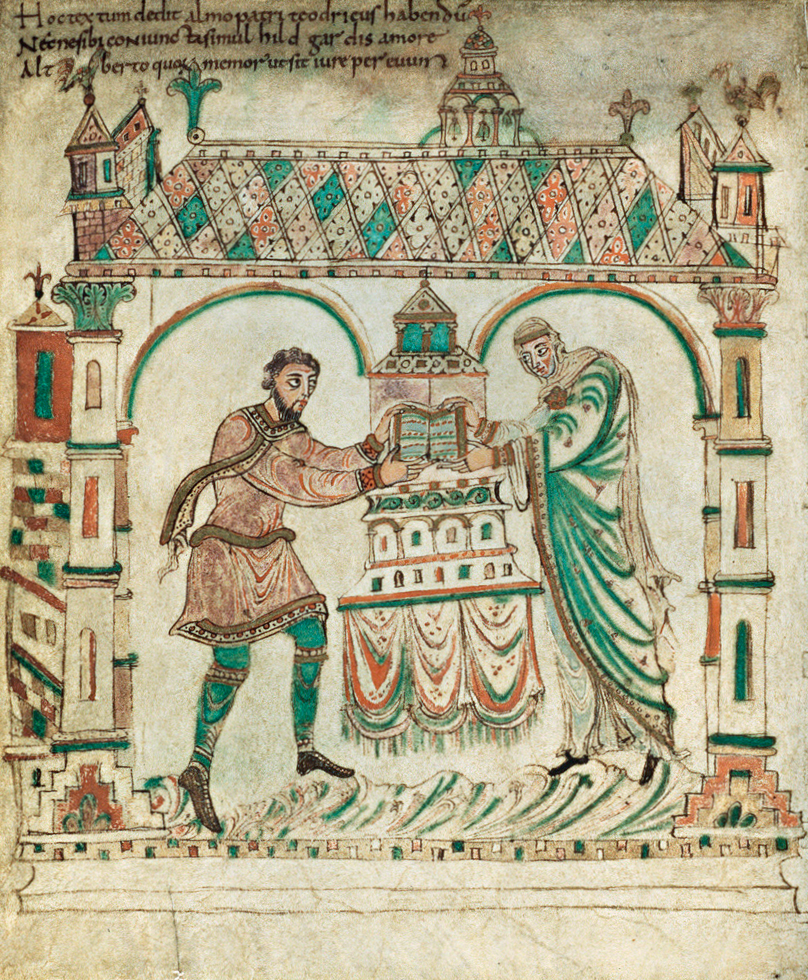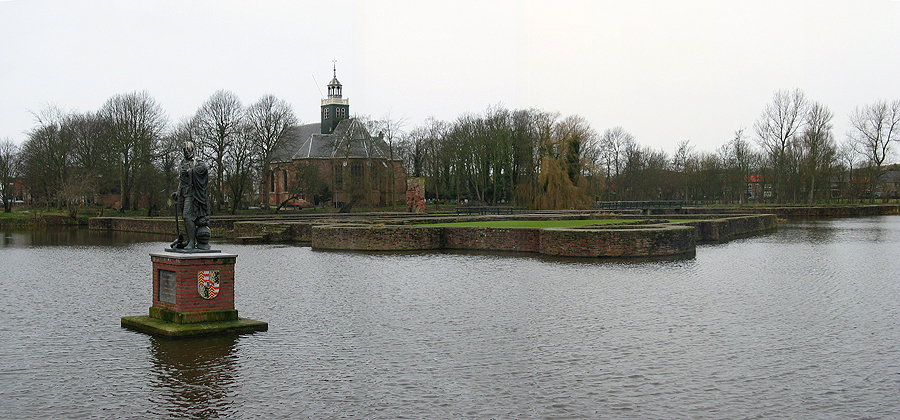St. Adelbert's Abbey on:
[Wikipedia]
[Google]
[Amazon]
 Egmond Abbey or St. Adalbert's Abbey ( nl, Abdij van Egmond, ''Sint-Adelbertabdij'') is a Benedictine monastery of the
Egmond Abbey or St. Adalbert's Abbey ( nl, Abdij van Egmond, ''Sint-Adelbertabdij'') is a Benedictine monastery of the
 Egmond was the oldest monastery of the Holland region. According to tradition, the Benedictine abbey was founded by Dirk I, Count of Holland, in about 920-925. It was a nunnery erected near a small wooden church built over the grave of Saint
Egmond was the oldest monastery of the Holland region. According to tradition, the Benedictine abbey was founded by Dirk I, Count of Holland, in about 920-925. It was a nunnery erected near a small wooden church built over the grave of Saint
 The abbey had many property and feudal rights. Its library and scriptorium were very important. Monks served as scribes in the ducal chancery. Dirk I, the founder, was buried there, as were many subsequent counts of Holland and members of their families, including Dirk II,
The abbey had many property and feudal rights. Its library and scriptorium were very important. Monks served as scribes in the ducal chancery. Dirk I, the founder, was buried there, as were many subsequent counts of Holland and members of their families, including Dirk II,
 North of the abbey is the site of
North of the abbey is the site of
"Amsterdam church receives Saint Nicholas bone fragment for Sinterklaas", ''NL Times'', December 5, 2021
/ref>
File:Bonifatius-gregorius-aedelbertus-noordwijk.JPG, Egmond Abbey altarpiece of 1530 by the Egmond monk Jan Joesten van Hillegom
File:Jacob Isaacksz. van Ruisdael - The Jewish Cemetery - WGA20486.jpg, ''
 Egmond Abbey or St. Adalbert's Abbey ( nl, Abdij van Egmond, ''Sint-Adelbertabdij'') is a Benedictine monastery of the
Egmond Abbey or St. Adalbert's Abbey ( nl, Abdij van Egmond, ''Sint-Adelbertabdij'') is a Benedictine monastery of the Congregation of the Annunciation
The Congregation of the Annunciation (''Congregatio Annuntiationis B.M.V.''), formerly known as the Belgian Congregation, is a congregation of monasteries within the Roman Catholic Benedictine Confederation. Founded in 1920, the Congregation inc ...
between Egmond aan den Hoef and Bakkum
Bakkum is a village in the Dutch province of North Holland. It is a part of the municipality of Castricum and lies about 12 km southwest of Alkmaar. It has three satellites: the village of , the hamlet and Bakkum aan Zee which is nowadays c ...
in Egmond-Binnen in the municipality of Bergen in the Dutch province of North Holland
North Holland ( nl, Noord-Holland, ) is a province of the Netherlands in the northwestern part of the country. It is located on the North Sea, north of South Holland and Utrecht, and west of Friesland and Flevoland. In November 2019, it had a ...
. Founded in 920-925 and destroyed in the Reformation, it was re-founded in 1935 as the present ''Sint-Adelbertabdij'', in the Diocese of Haarlem.
History
 Egmond was the oldest monastery of the Holland region. According to tradition, the Benedictine abbey was founded by Dirk I, Count of Holland, in about 920-925. It was a nunnery erected near a small wooden church built over the grave of Saint
Egmond was the oldest monastery of the Holland region. According to tradition, the Benedictine abbey was founded by Dirk I, Count of Holland, in about 920-925. It was a nunnery erected near a small wooden church built over the grave of Saint Adalbert
Adalbert is a German given name which means "noble bright" or "noble shining", derived from the words ''adal'' (meaning noble) and ''berht'' (shining or bright). Alternative spellings include Adelbart, Adelbert and Adalberto. Derivative names inclu ...
. In about 950 work began on a stone church to replace the wooden one, as a gift from Dirk II, Count of Holland, and his wife Hildegard, to house the relics of Saint Adalbert. The consecration of the new church apparently took place in or shortly after 975, and is recorded in the Egmond Gospels, presented to the abbey by Dirk. At the same time a community of Benedictine monks from Saint Peter's Abbey, Ghent replaced the nuns, who under their abbess Erlinde, daughter of Count Dirk, were transferred to a newly established nunnery, Bennebroek Abbey.Selderhuis, Herman J., ''Handbook of Dutch Church History'', Vandenhoeck & Ruprecht, 2014, p. 45 The abbey had many property and feudal rights. Its library and scriptorium were very important. Monks served as scribes in the ducal chancery. Dirk I, the founder, was buried there, as were many subsequent counts of Holland and members of their families, including Dirk II,
The abbey had many property and feudal rights. Its library and scriptorium were very important. Monks served as scribes in the ducal chancery. Dirk I, the founder, was buried there, as were many subsequent counts of Holland and members of their families, including Dirk II, Arnulf
Arnulf is a masculine German given name.
It is composed of the Germanic elements ''arn'' "eagle" and ''ulf'' "wolf".
The ''-ulf, -olf'' suffix was an extremely frequent element in Germanic onomastics and from an early time was perceived as a mere ...
, Dirk III, Floris I, Dirk V
Dirk V (1052 – June 17, 1091) was Count of Holland (called Frisia at that time) from 1061 to 1091.
Dirk V succeeded his father, Floris I, under the guardianship of his mother, Gertrude of Saxony. William I, Bishop of Utrecht, took advantag ...
, and Floris II. Egbert, the son of Dirk II, was educated at Egmond and later became Archbishop of Trier.
The Count Lamoral, owner of the nearby castle, was beheaded in 1568, and this started the Dutch Revolt
The Eighty Years' War or Dutch Revolt ( nl, Nederlandse Opstand) (Historiography of the Eighty Years' War#Name and periodisation, c.1566/1568–1648) was an armed conflict in the Habsburg Netherlands between disparate groups of rebels and t ...
. Shortly afterwards, in 1573, the abbey was dissolved and laid waste just before the siege of Alkmaar on the orders of Diederik Sonoy to prevent it being used by the Spanish. The abbey's income was diverted by the stadtholder to the financing of his educational project, the newly formed Leiden University
Leiden University (abbreviated as ''LEI''; nl, Universiteit Leiden) is a Public university, public research university in Leiden, Netherlands. The university was founded as a Protestant university in 1575 by William the Silent, William, Prince o ...
.
Relationship to Egmond Castle
 North of the abbey is the site of
North of the abbey is the site of Egmond Castle
Egmond Castle ( nl, Kasteel Egmond), also called the ''Ruins of Egmond'' ( nl, Ruïne van Egmond), is a ruined medieval castle in the Dutch province of North Holland. It is located in Egmond aan den Hoef in the municipality of Bergen and lies ab ...
in Egmond aan den Hoef. The castle was built by the knight Berwout van Egmond in 1129, who was paid by the Count of Holland to represent him, protect the abbey and collect the rents, as '' Voogd''. This was the origin of the House of Egmond. The relationship quickly turned into a power struggle between the Egmond family and the abbots that lasted for centuries. Just like the abbey, the castle was destroyed in 1573. The chapel was later restored by the Dutch Protestant church, but the castle was never rebuilt. The foundations are still visible and the land surrounding the old moat and foundations has been turned into a park.
Sint-Adelbertabdij
In 1933 a new Benedictine community, the Sint-Adelbertabdij, was founded on the site of the former Egmond Abbey, and was again dedicated to Saint Adalbert. The first buildings, designed by ( ''nl'') were constructed in 1935. and the community was repopulated with monks (from the Benedictine abbey in Oosterhout). Buildings were refurbished and extended in the late 1940s and early 1950s; the monastery was elevated to an abbey in 1950. The farmlands were put back to use, though since 1989 however the agricultural lands have been let to a farmer. A candle-making operation was started in 1945 to support the community, and later a pottery workplace was added. In 1984 the relics of Saint Adalbert were returned here, having been kept safe inHaarlem
Haarlem (; predecessor of ''Harlem'' in English) is a city and municipality in the Netherlands. It is the capital of the province of North Holland. Haarlem is situated at the northern edge of the Randstad, one of the most populated metropoli ...
since the destruction of the previous monastery in the 16th century, and are enshrined beneath the altar.
In the spring of 2003 the monks had solar panels installed which were promptly stolen two weeks later, a loss of €20,000. An online collection was held to help pay for new panels.
In December 2021, the Abbey donated a relic of Saint Nicholas to the Basilica of Saint Nicholas in Amsterdam. Said to be a fragment of the saint's rib, the bone has been in the custody of the Abbey since 1087./ref>
Legacy
Many artefacts from the old abbey have been recovered in the years since the ' beeldenstorm' of 1568, such as the altarpiece of 1530, and the Egmond Tympanum, a 12th-century tympanum originally set over the portal of the west front of the abbey church, which since 1842 has been preserved in theRijksmuseum
The Rijksmuseum () is the national museum of the Netherlands dedicated to Dutch arts and history and is located in Amsterdam. The museum is located at the Museum Square in the borough of Amsterdam South, close to the Van Gogh Museum, the St ...
. At first it was assumed that all the abbey's possessions had been burned, but in fact they had been sold by the Protestant leader who dissolved the abbey, Diederik Sonoy, before the buildings were destroyed. In recent decades the current monastery has been able to recover many lost relics, or at least information about them. The old abbey had been of great importance to artists, and much of that art has survived, against all odds.
Moreover, in the intervening period from 1568 until the remaining ruins were finally demolished in about 1800, the abbey and the associated castle ruins served as an inspiration in its damaged state to many artists who visited Bergen, Schoorl or Egmond to paint the ruins, among them Jacob van Ruisdael in 1655-60.
The Jewish Cemetery
''The Jewish Cemetery'' (c. 1650s) is an oil painting, oil on canvas painting by the Netherlands, Dutch landscape painter Jacob van Ruisdael.
It is an example of Dutch Golden Age painting and is now in the collection of the Detroit Institute of A ...
'' by Jacob van Ruisdael with the ruins of Egmond Abbey
File:Kellen Egmond litho.jpg, The Egmond Tympanum, depicting Saint Peter between Dirk VI, Count of Holland, and his mother and Countess Petronilla (chromolithograph of 1860/61)
File:Abdij-toren egmond-binnen1725.jpg, Egmond Abbey ruins, 1725
References
External links
* * {{coord, 52, 35, 42, N, 4, 39, 37, E, source:nlwiki_region:NL_scale:6250, display=title Christian monasteries established in the 7th century Benedictine monasteries in the Netherlands Buildings and structures in North Holland Bergen, North Holland Monasteries dissolved under the Dutch Reformation 7th-century churches Burial sites of the House of Holland (nobility)